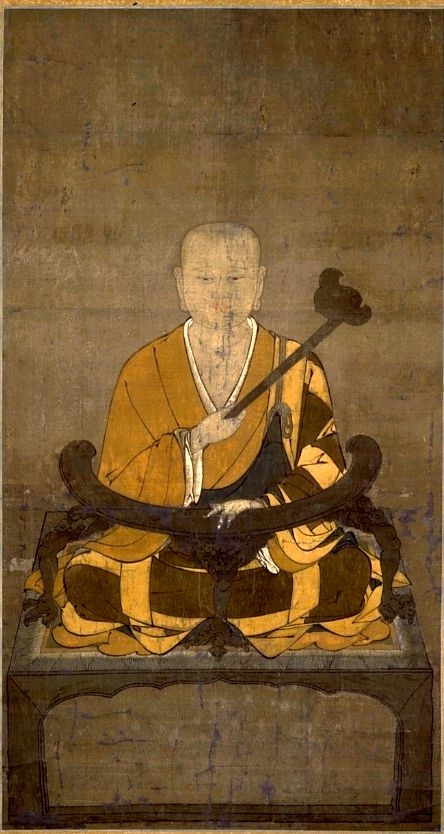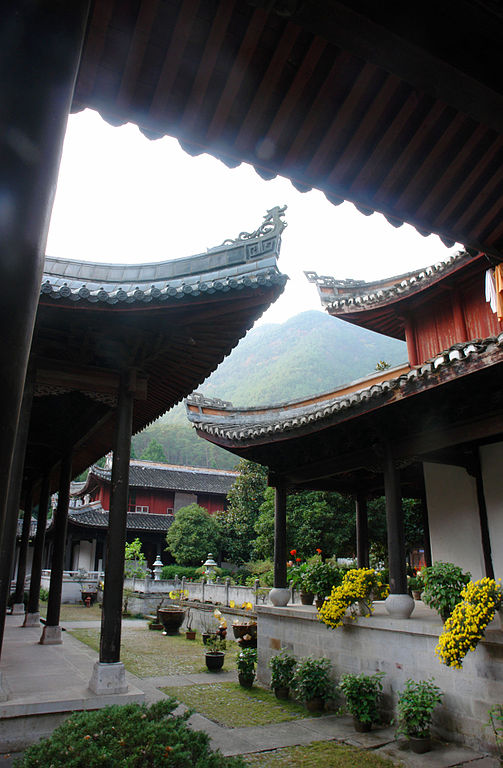
First on Zhiyi’s (538-597) mind when he founded the Tiantai school in the 6th century, was to work out a doctrine to organise into a coherent and meaningful system, the Buddhist teachings that were still being translated from Sanskrit into Chinese during his time. It wasn’t long, however, before he turned to the Lotus Sutra, which he saw as containing the “final” teaching of Sakyamuni Buddha, which, according to a classification Zhiyi worked out, the Buddha had taught in the last eight years of his life. He was also drawn to the writings of the Madhyamaka school as the basis for his approach to doctrine and practice, but showed no particular interest in the Tathagatagarbha movement, and was possibly unaware of the Awakening of Faith and the Huayan teachings, which were still in the making at the time.
It is, however, in the Japanese Tendai school that the concept of original enlightenment later developed to its highest degree of sophistication. So it may come as a surprise to find that this concept did not appear as a category in early Chinese Tiantai. “Nonetheless,” Stone writes, “the T’ien-t’ai tradition represents a crucial antecedent to the development of Japanese hongaku [original enlightenment] thought. In contrast to Hua-yen emphasis on all things arising from the mind, early T’ien-t’ai … denies that the mind is a pure, undifferentiated cosmic principle from which all things arise.”
“In the words of Chih-i [Zhiyi],” Stone adds, “One may say neither that the one mind is prior and all dharmas posterior nor that all dharmas are prior and the mind posterior … All one can say is that the mind is all dharmas and all dharmas are the mind. Therefore the relationship is neither vertical nor horizontal, neither the same nor different.”
Whereas both the Awakening of Faith and the Hua-yen tradition approached the vexing issue of “why an originally pure mind could also be the source of the unenlightened view of samsara?” using the Tathagatagarbha teachings and the concept of Buddha nature as a starting point, Zhiyi’s thought was rooted in Madhyamaka’s emphasis on the nonduality of absolute and conventional truth.

where Zhiyi lived
One of Nagarjuna’s central teachings had been the Two Truths: conventional truth and ultimate truth do not oppose, but instead, mutually imply each other. The conventional world of our everyday lives is made up of “things” which arose from co-dependent origination, and lack intrinsic existence. It should therefore be seen as not different – non-dual – with the ultimate truth of emptiness. Zhiyi elaborated Nagarjuna’s Two Truths into his doctrine of the Threefold Truth, emptiness, conventional existence, and the middle, where emptiness and conventional existence are seen simultaneously. In Stone’s words: “By contemplating the phenomena of conventional existence as arising through dependent origination, one discerns that they are empty of self-nature; this move, termed ‘entering emptiness from conventional existence’, frees one from attachment to samsaric existence. By a reverse discernment, ‘[re]entering conventional existence from emptiness’, one is freed from attachment to reified notions of emptiness and is able to reengage the myriad phenomena of the world in a soteriologically effective way. And by contemplation of the middle, one gains both discernments simultaneously the perspectives of ‘emptiness’ and ‘conventional existence’ being mutually illuminated but also negated as one-sided extremes. The status of ‘conventional existence’ as the point from which one begins contemplation, and to which one ‘returns’ for bodhisattva practice, reflects T’ien-t’ai’s emphasis on concrete particulars as instantiating ultimate truth: ‘Of every form and fragrance, there is none that is not the Middle Way’.”
Stone quotes Tamura Yoshiro’s formula encapsulating the difference between Huayan and Tiantai thinking: “Hua-yen, Tamura says, moves from li (principle) to shih (phenomena), while T’ien-t’ai moves from shih to li, stressing that each particular as it stands encompasses the true aspect of reality.” Stone has described the development of the concept of original enlightenment in the Japanese Tendai tradition as “a rhetorical stance grounded in a philosophical commitment to collapsing any sort of distance between ultimate reality and the quotidian world, or between the Buddha and ordinary worldlings. How closely this ideal of ‘absolute’ nonduality is approached becomes the standard for its own claim to superiority over other doctrinal positions.”
Source:
Jacqueline I. Stone – Original Enlightenment and the Transformation of Medieval Japanese Buddhism
